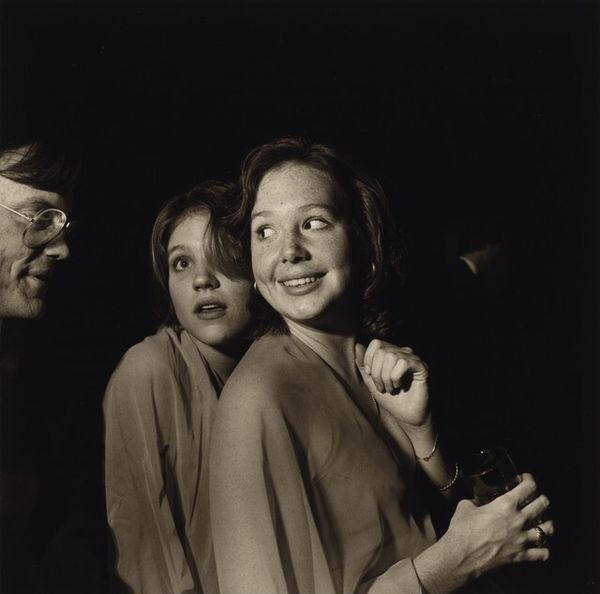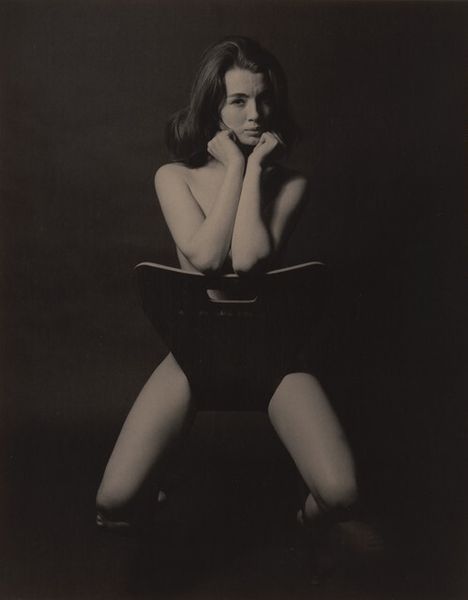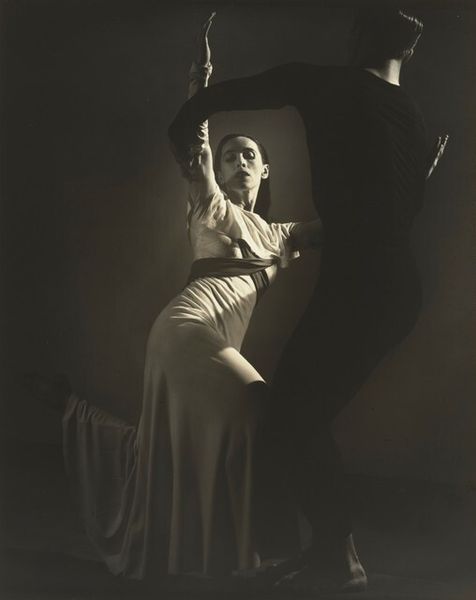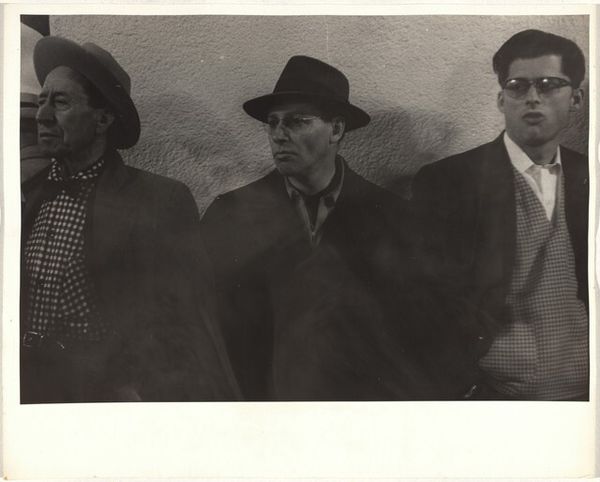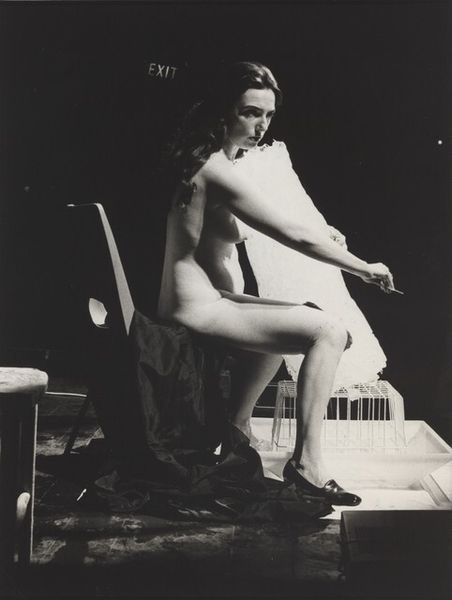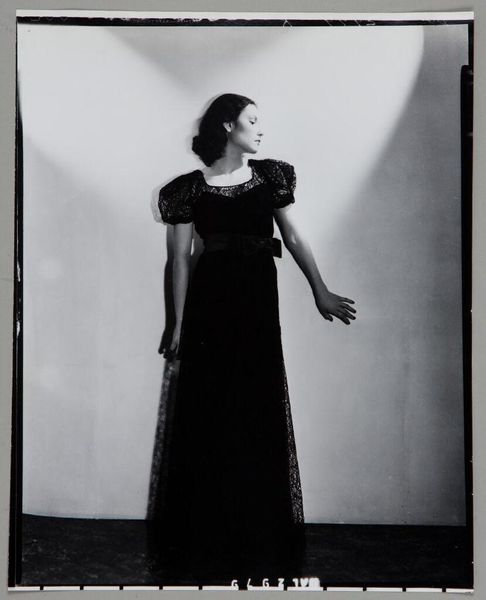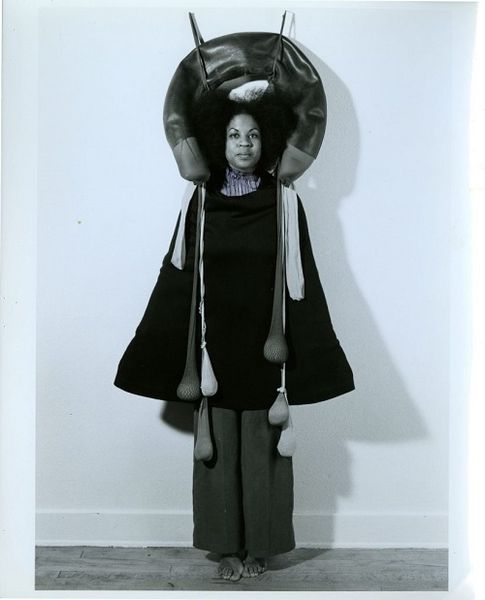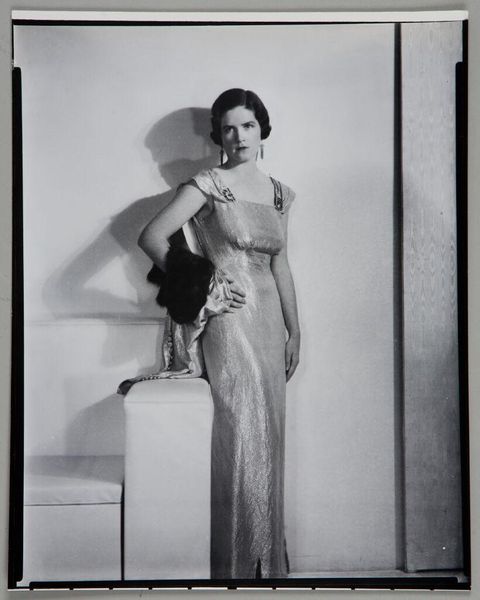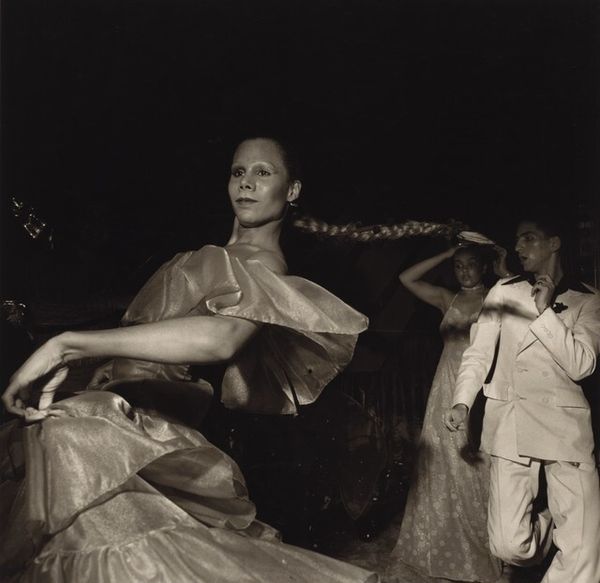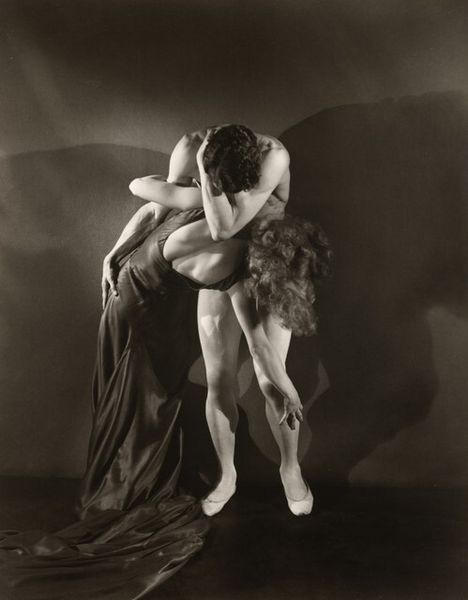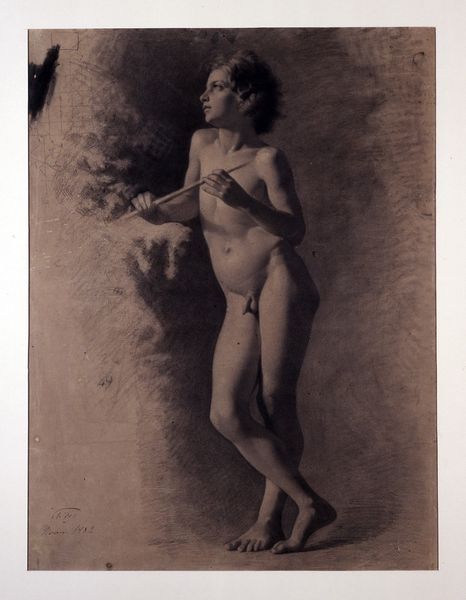
photography, gelatin-silver-print
#
portrait
#
photography
#
historical photography
#
black and white theme
#
group-portraits
#
black and white
#
gelatin-silver-print
#
genre-painting
#
modernism
Dimensions: overall: 57.6 x 46.7 cm (22 11/16 x 18 3/8 in.)
Copyright: National Gallery of Art: CC0 1.0
Editor: This is Irving Penn's "Ballet Society, New York," possibly from somewhere between 1948 and 1980, a gelatin-silver print. The figures seem posed against a wall, almost trapped. What can you tell me about this piece? Curator: Looking at this image, I immediately think about the labor embedded in its production. Gelatin-silver prints were a dominant medium, but what does it mean to use it for a 'high art' subject like ballet? We see a staged image of the ballet society members, likely including dancers and directors. The backdrop is simple, even austere, highlighting the artificiality. Consider the relationship between Penn, the photographer as a kind of industrial creator, and his subjects; are they collaborating, or is Penn merely producing them? Editor: That’s a very interesting take. So, you're focusing less on the ballet itself and more on the making of the photograph as a material object. Curator: Precisely. The materials, from the photographic paper to the costumes (or simple clothing), speak to the social context. What are they wearing, what are the conditions of production, of display? Is this image reinforcing or challenging conventional understandings of ‘artistic’ labor versus other forms of work? What about distribution, the photograph itself has to become something through being made. Editor: It also shows the ballet society was in a difficult time to pose in a corner with austere clothing like that, and I wonder if Penn had captured an uncomfortable reality for them in that setting. Curator: The composition then reflects those possibilities too: Penn confined them physically in his composition and then in turn fixed their cultural status with this object. So that leaves me to ask, could Ballet possibly still have been a means of socioeconomic advancement during this period, perhaps, by allowing these portraits to circulate? Editor: That’s an important point, how labor and art were consumed back then. It makes me see the picture differently now! Thanks. Curator: Likewise, it is intriguing to question the values inscribed upon this work, now that we both reflect on them.
Comments
No comments
Be the first to comment and join the conversation on the ultimate creative platform.
